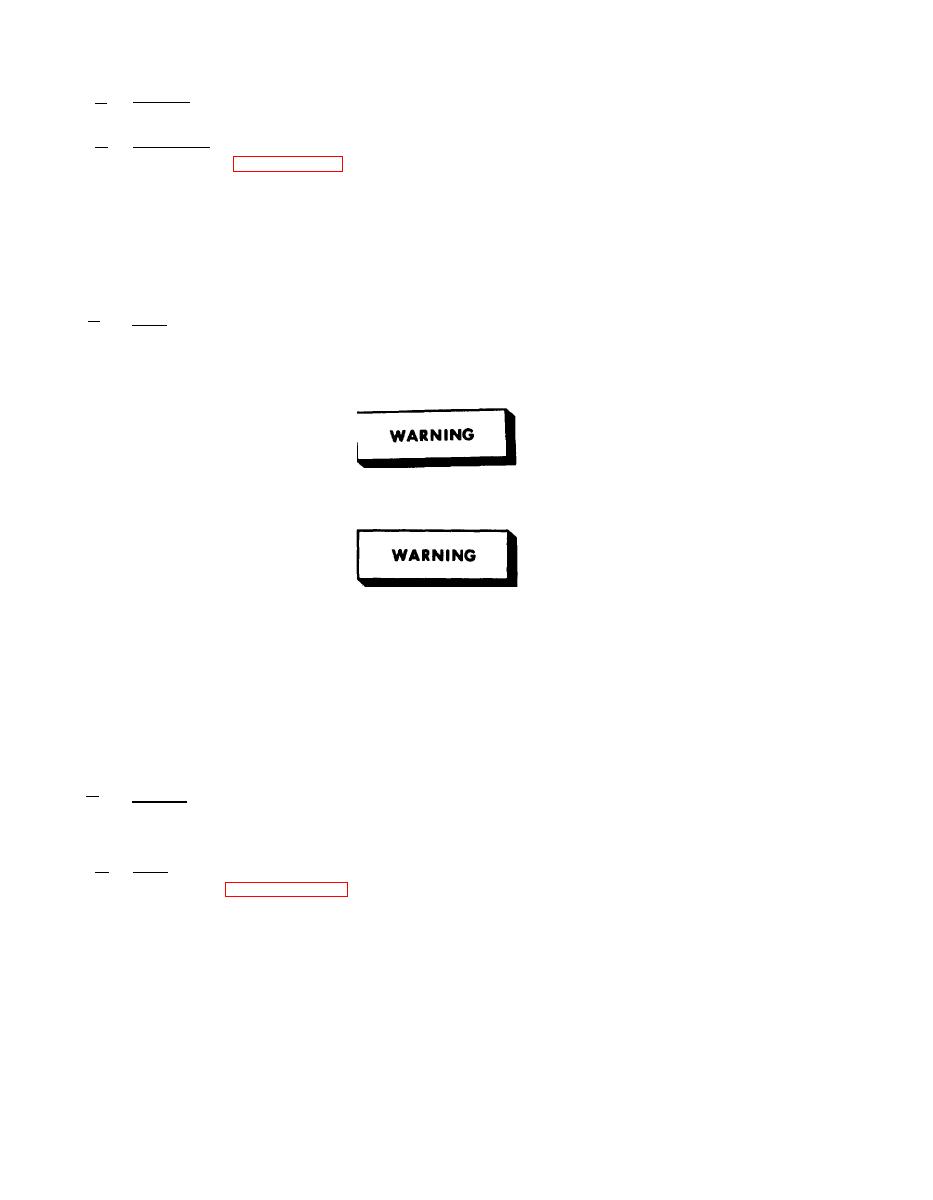 |
|||
|
|
|||
|
Page Title:
EXPANSION VALVE (PRIMARY) INSPECTION AND TEST. |
|
||
| ||||||||||
|
|
 TM 5-4120-369-14
4-40.
EXPANSION VALVE (PRIMARY) INSPECTION AND TEST.
General. If the air conditioning unit is not cooling properly, inspect and test the
a.
expansion valve for defects.
Inspection,
b.
( 1 ) Refer to paragraph 4-8 and remove top covers.
( 2 ) Refer to figure 4-26 and check that the required length of the expansion valve's
sensing bulb is fully in the suction line bulb well.
( 3 ) Refer to figure 4-26 and examine the flow restrictor capillary tubes carefuIly.
They should be very COld and evenly frosted. Unfrosted tubes are blocked and should be-
replaced.
(4) If the capillary tube is cold and frosted, the valve is blocked or the valve's
power assembly is ruptured, The test for the power assembly is listed in the following paragraph.
c.
Test the power assembly by removing the valve's sensing bulb from the
Test.
suction bulb well (figure 4-26). Hold the sensing bulb firmly in both hands for two or three
minutes. The warmth from holding the bulb should put enough pressure on the bellows to
start the refrigerant flowing into the system. If cooling does not commence, the expansion
valve is defective and should be replaced. Report all defects to Direct Support maintenance.
4-41.
COMPRESSOR
REFRIGERANT UNDER PRESSURE
is used in this equipment Organizational personnel
are not authorized to open the pressurized system.
HIGH VOLTAGE
is used in the opertion of this equipment
DEATH ON CONTACT
or severe injury may result if personnel fail to
observe safety precautions. Always disconnect
the air conditioner from power source before per-
forming maintenance on this equipment. If power
must remain on for troubleshooting, exercise
extreme care to avoid contact with any electrical
component, fan, fan motor, etc. Do not operate
the air conditioner without louvers, top controls,
and guards in place and tightly secured.
a.
General. The compressor is a hermetically sealed unit and is not repairable. An
inoperative compressor is usually due to a mechanical failure causing the compressor to freeze,
a control failure, or motor burnout. Compressor replacement is required in all cases of
mechanical or motor burnout. If the motor is defective, report to Direct Support maintenance.
Test.
b.
(1) Refer to paragraph 4-18 and remove the top covers.
(2) Disconnect receptacle connector.
(3) Refer to wiring diagram (FO-1) and test for continuity using a multimeter. Lack
of continuity indicates an open winding. Report to Direct Support Maintenance.
(4) Place one contact of the multimeter against the compressor housing and the other
against the motor terminals, one at a time. If a circuit is indicated, the motor is grounded.
Report to Direct Support maintenance.
4-48
|
|
Privacy Statement - Press Release - Copyright Information. - Contact Us |